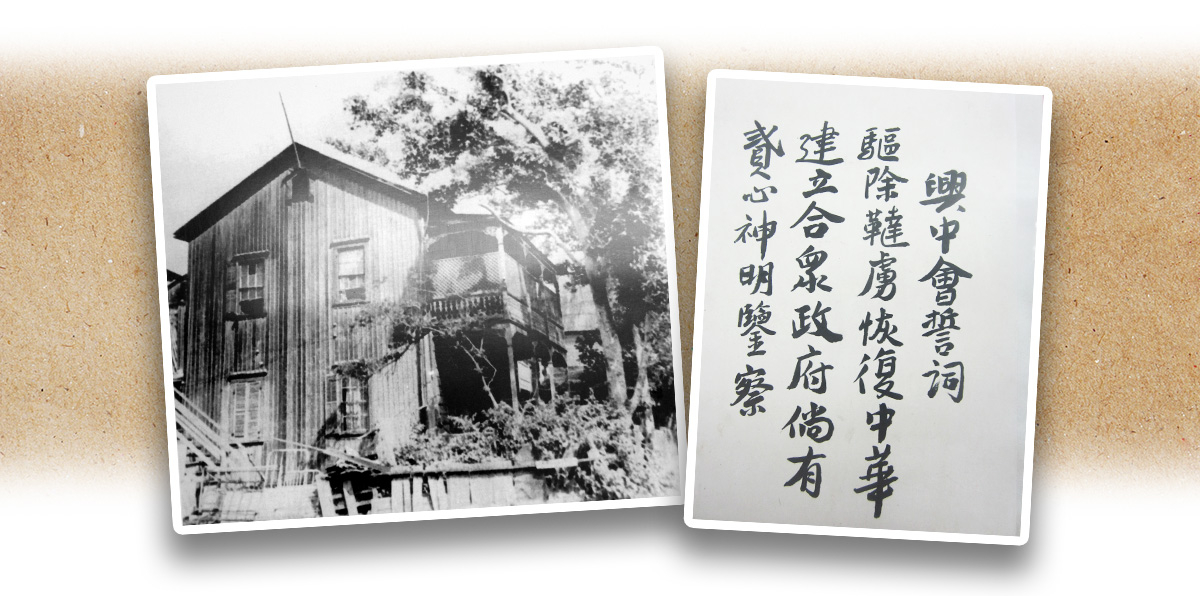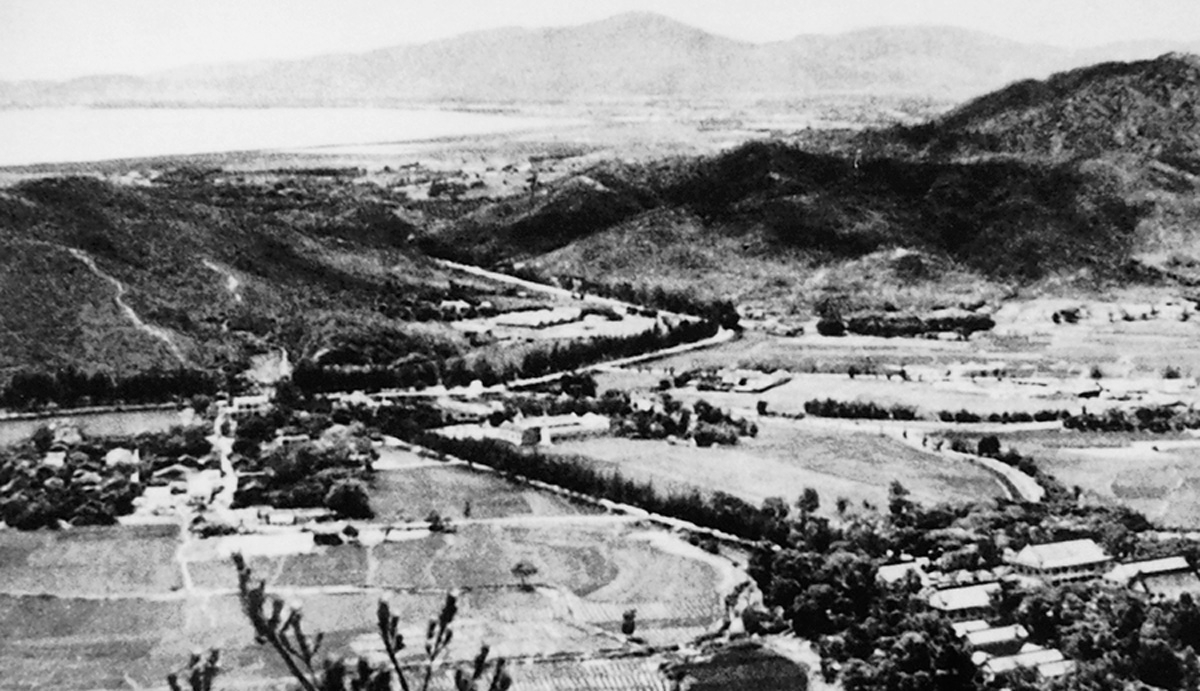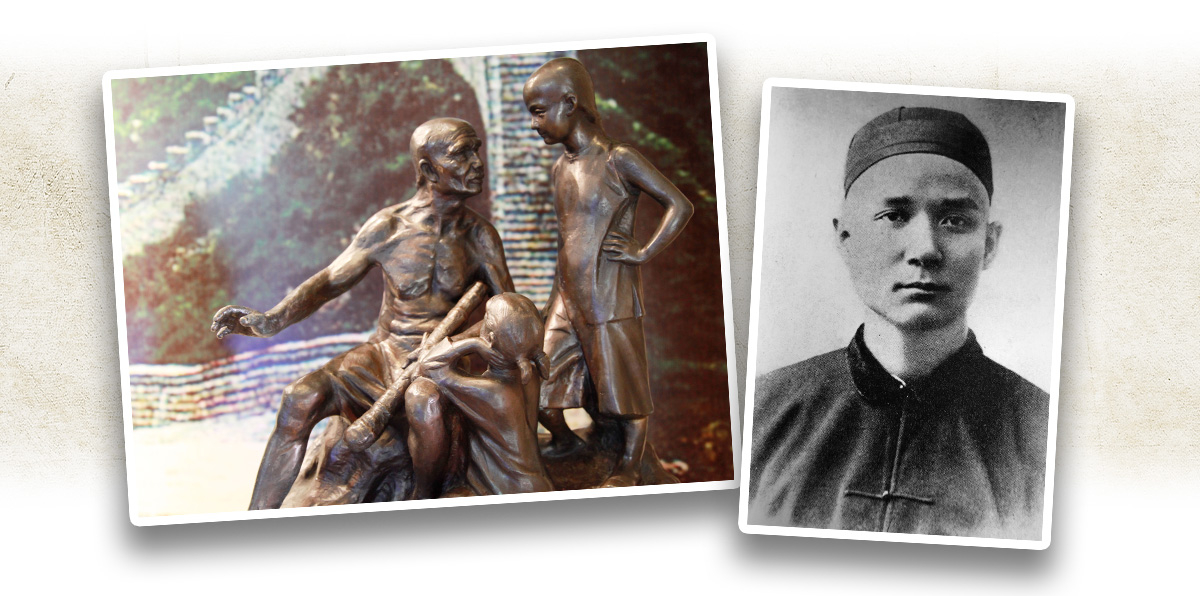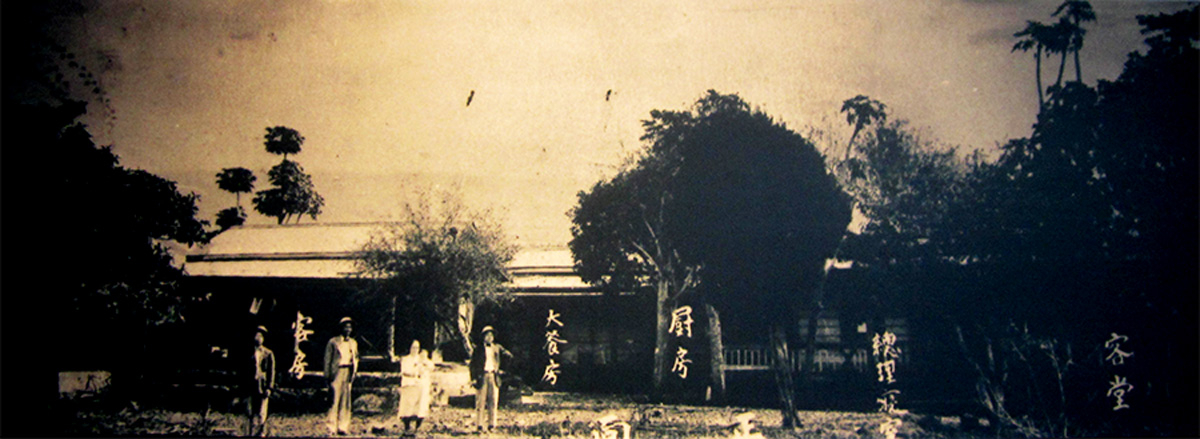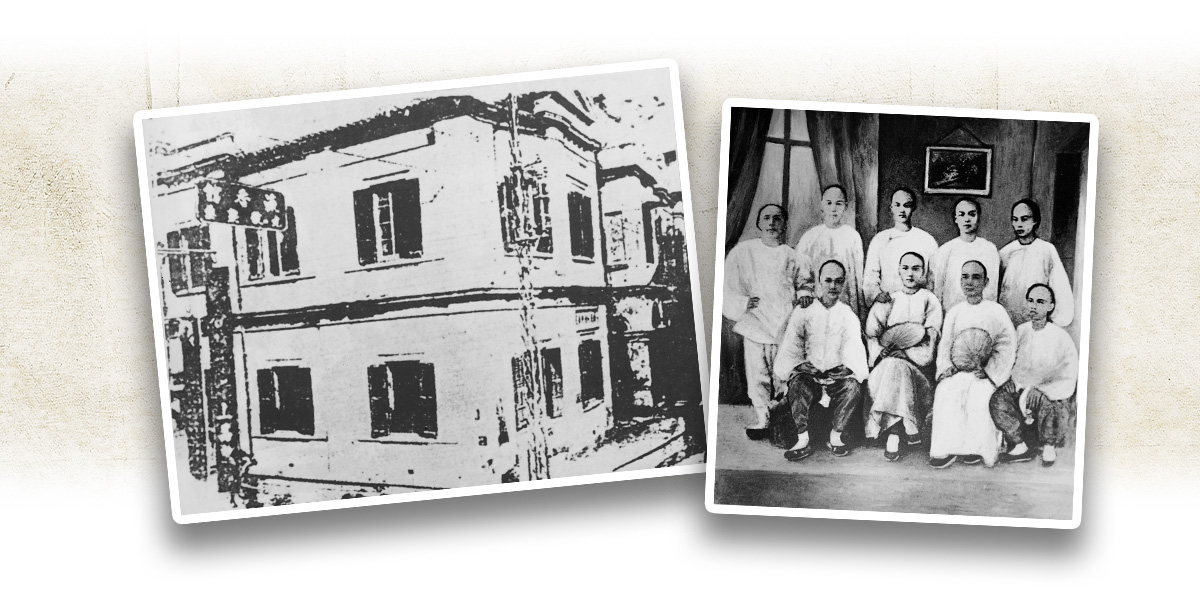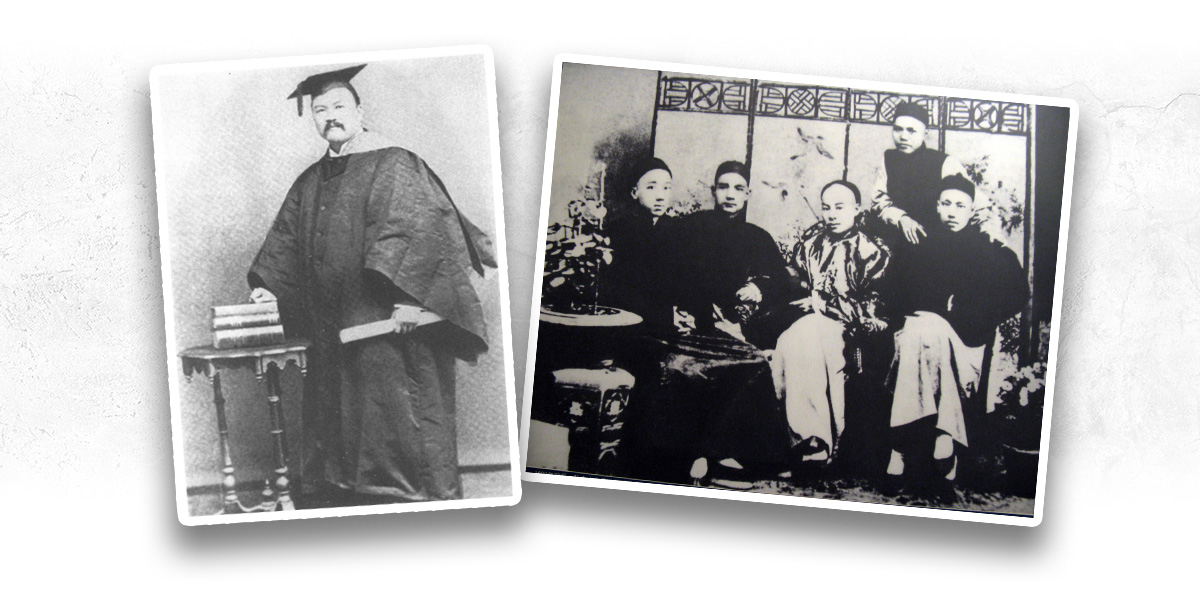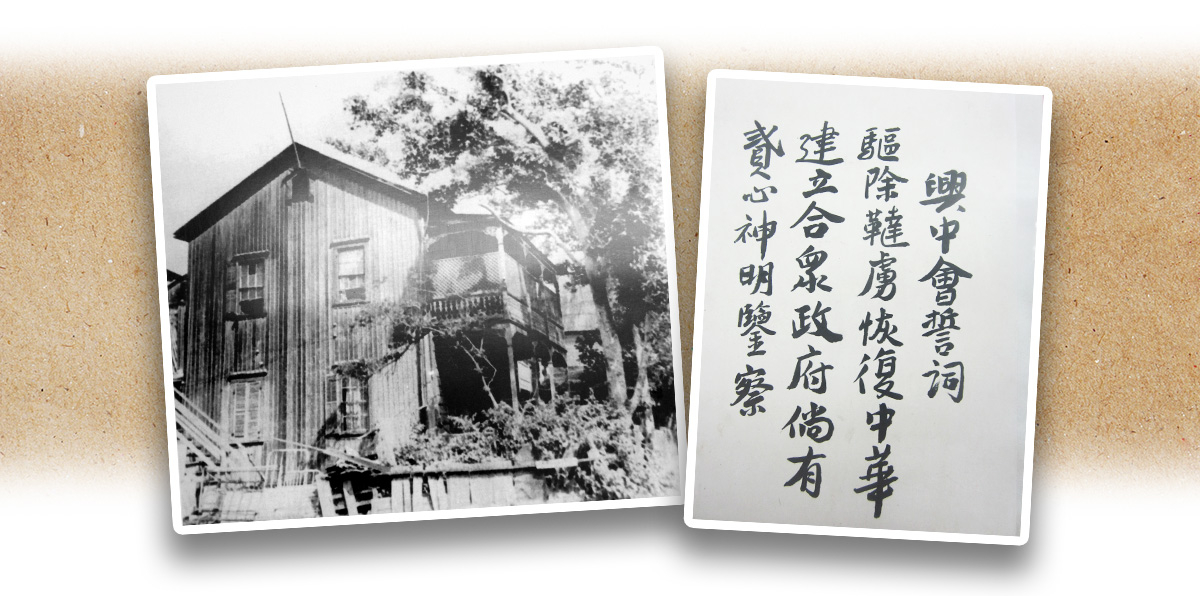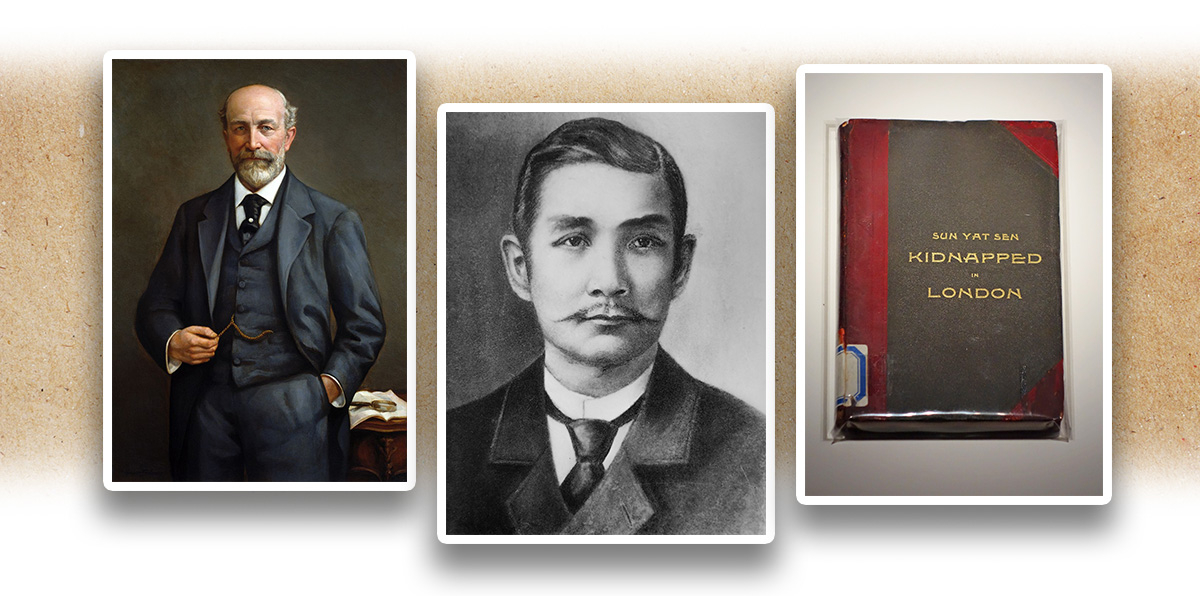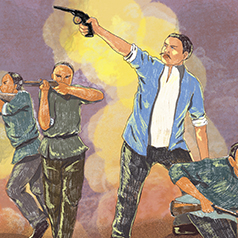Following the First Sino-Japanese War, many patriotic Chinese lost hope in the Qing government’s Self-strengthening Movement (洋務運動) to acquire strength and wealth only to salvage the failing regime. They thus resolved to join the revolution to topple the Qing dynasty. The leading figure of the revolution was Sun Yat-sen.
Sun Wen (孫文, 1866-1925), who was also known by his art name Sun Yat-sen (孫逸仙). He was more popularly known by the name Sun Zhongshan (孫中山), which was derived from Nakayama Shō (中山樵), another name he used in Japan. The Japanese kanji (adopted logographic Chinese characters) of Nakayama Shō are pronounced “Zhongshan Qiao” in Chinese.
Sun was a native of Xiangshan County (香山縣, current-day Zhongshan City﹝中山市﹞), Guangdong Province (廣東). He had been an admirer of Hong Xiuquan (洪秀全) since his youth. He then studied in Honolulu of the United States, Guangzhou (廣州), and Hong Kong to expose to Western thinking. Although he graduated from the College of Medicine for Chinese, Hongkong (香港華人西醫書院), with a license to be a doctor, he readily gave up his career for the anti-Qing movement.
In the 1894 petition letter to Li Hongzhang (李鴻章), Sun argued that the principles for running the country should be “making the best use of every talent, tapping the potential of every piece of land, making everything serve its purpose, and opening markets for its goods”. However, Li was nonchalant to these views.
Shortly, the First Sino-Japanese War broke out. Its demoralising end drove Sun to establish a revolutionary group named the Revive China Society (興中會) in Honolulu on 24 November 1894. On 21 February 1895, the Revive China Society’s headquarters was set up in Central, Hong Kong. He laid out the group’s political agenda as “expel Manchus, restore China, and establish a unified government”. In October of the same year, the Society launched its first anti-Qing armed revolt in Guangzhou, and a second attempt in Huizhou (惠州), Guangdong, in 1900. Unfortunately, both attempts failed.
|
|
Sun Yat-sen once said that his revolutionary ideas were conceived in Hong Kong. What would be a succinct description of the connection between his revolutionary work and Hong Kong in terms of his education and the establishment of the Revive China Society’s headquarters there? |
|
|
See answer below. |
Pictured is Cuiheng Village (翠亨村) of Xiangshan County, Guangdong, in the 1970s. Sun Yat-sen was born there on 12 November 1866.
Xiangshan County (1152-1925) was first established during the South Song dynasty (南宋) . It was renamed “Zhongshan County” to honour Sun Yat-sen after his death in 1925. In 1983, it became Zhongshan City. Now a major city in southern Guangdong, Zhongshan has preserved Sun’s former residence and his relics at Cuiheng Village.
On the left: a sculpture of Sun Yat-sen in the Sun Yat-sen Memorial Hall in Nanjing (南京), Jiangsu Province (江蘇). It portrays the young Sun listening to stories about the Taiping Rebellion (太平天國) told by an elder who had lived the history. On the right: a photo of 17-year-old Sun Yat-sen in 1883. The Taiping Rebellion’s anti-Qing feats inspired Sun to take up the revolutionary path.
The residence of Sun Mei (孫眉), Sun Yat-sen’s elder brother, in Honolulu. Sun Yat-sen lived here between 1879 and 1883. Sun Mei made his fortune in ranching and other businesses. Yet, he went bankrupt after using most of it to finance the revolution.
On the left: the College of Medicine for Chinese, Hongkong (formerly located at present day 77-81 Hollywood Road, Central); on the right: a group photo of Sun Yat-sen (second figure from the right in the front row) and his fellow students at the College of Medicine for Chinese. Sun obtained education in Hong Kong in 1883 and studied at the College in 1887.
Sun Yat-sen’s teacher and fellow students in Hong Kong. On the left: Ho Kai (何啟); on the right: a photo of the “Four Bandits (四大寇)”. Pictured in the front row from the left are Yeung Hok-ling (楊鶴齡), Sun Yat-sen (孫中山), Chan Siu-bak (陳少白), and Yau Lit (尢列). The person standing at the back is Kwan Sum-yin (關心焉).
Ho Kai was one of Sun Yat-sen’s teachers in Hong Kong. He was an inspiration for Sun and a supporter of his revolutionary work. Sun once said, “I benefited from Ho Kai’s mentorship.” During his days at the College of Medicine for Chinese, Sun often discussed current issues and anti-Qing aspirations with Yeung Hok-ling, Chan Siu-bak, and Yau Lit. The group was nicknamed the “Four Bandits”.
On the left: in June 1894, prior to the start of the First Sino-Japanese War, Sun Yat-sen wrote a petition letter to Li Hongzhang (李鴻章) in which he criticised the Self-strengthening Movement’s inadequacies. However, Li ignored Sun’s letter. In the same year, Sun’s petition to Li was published in two parts in the September and October editions of the Shanghai-based newspaper A Review of the Times (《萬國公報》). On the right: a scene portraying the Battle of the Yellow Sea waged in September 1894. Sun’s petition to Li showed that he still intended to reform the Qing government at that time. After the Beiyang Fleet’s (北洋艦隊) crushing defeat at the naval battle, he made up his mind to overthrow the Qing dynasty.
Sun Yat-sen established the Revive China Society in Honolulu on 24 November 1894. On the left is where the Honolulu-based members took their secret oaths. On the right is the Society’s oath.
Yeung Ku-wan (楊衢雲) and some Hong Kong-based members of the Revive China Society. In 1890 (some said 1892), Yeung became the leader of the newly formed Furen Literary Society (輔仁文社), an anti-Qing group. In February 1895, it merged with the Honolulu-based Revive China Society. The combined Revive China Society then established its headquarters in Hong Kong. Yeung and Sun Yat-sen became the Society’s president and secretary respectively. In October of the same year, the Society launched its first anti-Qing revolt in Guangzhou but failed.
After the Guangzhou Uprising failed, Sun Yat-sen continued to advocate revolution overseas. Sun thus became a threat to the Qing government. In 1896, the Qing government’s agents kidnapped and secretly imprisoned him at the Chinese Legation in London. The plan was to smuggle Sun back to China and kill him. Fortunately, he was rescued by his teacher James Cantlie. When he was safe again, he wrote a book titled Kidnapped in London (《倫敦蒙難記》) on the incident that made him famous overseas. Pictured from the left are Cantlie, Sun in 1896, and Kidnapped in London published in 1897.
Japan was an important base for the Revive China Society’s anti-Qing activities. Pictured is an 1898 photo of Yeung Ku-wan, the President of the Revive China Society (second figure from the left in the first row); Sun Yat-sen, the Secretary of the Revive China Society (third figure from the right in the back row), and their Japanese supporters. The third figure from the left in the back row is Miyazaki Tōten, a close friend of Sun and staunch supporter of the revolution in China. In 1900, the Society launched its second uprising in Huizhou and failed.
|
|
Sun Yat-sen once said that his revolutionary ideas were conceived in Hong Kong. What would be a succinct description of the connection between his revolutionary work and Hong Kong in terms of his education and the establishment of the Revive China Society’s headquarters there? |
|
|
It was no coincidence that Sun Yat-sen’s revolutionary ideas originated in Hong Kong and his revolutionary career was closely tied to the city as well. Sun attended the College of Medicine for Chinese, Hongkong, in 1887 and graduated first in his class in 1892. During his studies, he was with Yeung Hok-ling, Chan Siu-bak, and Yau Lit every day talking about revolution. This earned them the nickname the “Four Bandits”. Shortly after establishing the Revive China Society in Honolulu in 1894, Sun returned to Hong Kong to promote revolution. He then set up the Society’s headquarters under the guise of Kuen Hang Club (乾亨行) at 13 Staunton Street, Central, on 21 February 1895. Besides the “Four Bandits”, those who joined the Society included Sun Yat-sen’s close friends Zheng Shiliang (鄭士良), Lu Haodong (陸皓東), and Au Fung-Chi (區鳳墀). Furen Literary Society members including Yeung Ku-wan and Tse Tsan-tai (謝纘泰) were also members of Sun’s society. It was also in Hong Kong, that the 1895 Guangzhou Uprising was planned and provisioned. Thus, both Sun and the Society’s revolutionary work shared close ties with Hong Kong. |
Source of most photos used in this feature piece: Fotoe




